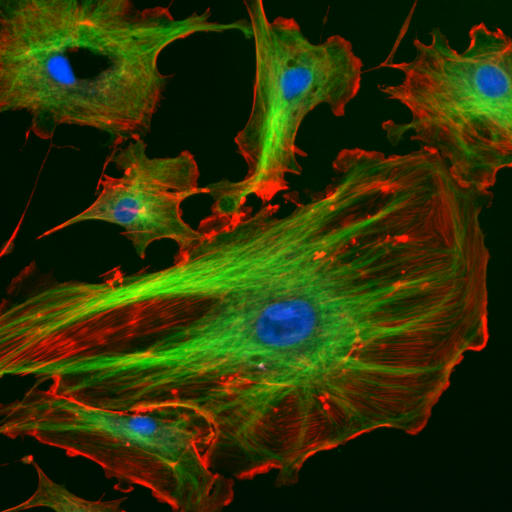 The Association for Computing Machinery (ACM) recently published an article, "Unifying Biological Image Formats with HDF5," that argues for using HDF5 and HDF tools as a common framework for working with image files. This article is worth reading for several reasons.
The Association for Computing Machinery (ACM) recently published an article, "Unifying Biological Image Formats with HDF5," that argues for using HDF5 and HDF tools as a common framework for working with image files. This article is worth reading for several reasons.First, it provides a nice introduction and background to HDF5, its origins, and movement towards becoming an ISO standard. HDF5's technical features are also included in this discussion.
Next, a brief history of the imaging community is covered to share how X-ray crystallographers, electron, and optical microscopists had all independently considered HDF5 as a framework for their next-generation image file formats. Through this discussion, the challenges that have been identified within the imaging community are listed.
Like genomics, the amounts of data being collected are ever increasing, current formats are inflexible and difficult to adapt to future modalities and dimensionality, and the nonarchival quality of data undermines long-term value. That is, current data typically lack sufficient metadata about their origins and experiments to be useful in the long-term.
The article goes on to make the point that current challenges with image data could be addressed if the community adopts an existing format that can support both generic and specialized data formats and meet a set of common requirements related to performance, interoperability, and archiving. Examples of how HDF5 meets these requirements are included. Briefly, HDF5's data caching can be used to overcome computation bottlenecks related to the fact that image sizes are exceeding RAM capacity. Interoperability issues can be addressed through HDF5's ability to store multiple metadata schemas in flexible ways. And, because HDF5 is self describing, data stored in HDF5 can be better preserved.
Finally, a barrier to moving to a new technology is supporting legacy applications that may be costly to replace. Thus, the article closes with a creative proposal for supporting legacy software applications and recommendations for future development. HDF5 files could support legacy software applications if they were able to present the data, stored within the HDF5 file, as the collection of directories and files required by the legacy application. This could be accomplished by developing an abstraction layer that could interact with FUSE (Filesystem in User Space) and essentially mount the HDF5 file as a virtual file system. Such a scenario is only possible because data are stored in HDF5 in a general way that can be further abstracted and presented in multiple specific ways.
While this article focused on issues related to image formats, there are many parallels that the genomics and Next Generation Sequencing communities should pay attention to, and if you are a bioinformatics software developer or running bioinformatics projects, you should put this paper on your must read list.
No comments:
Post a Comment